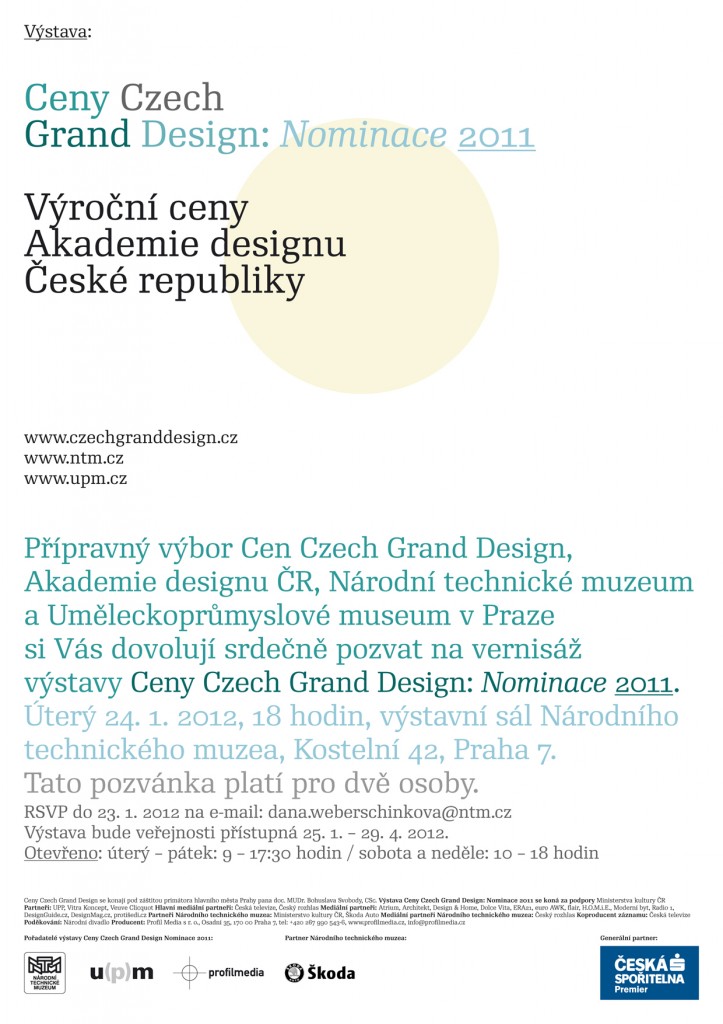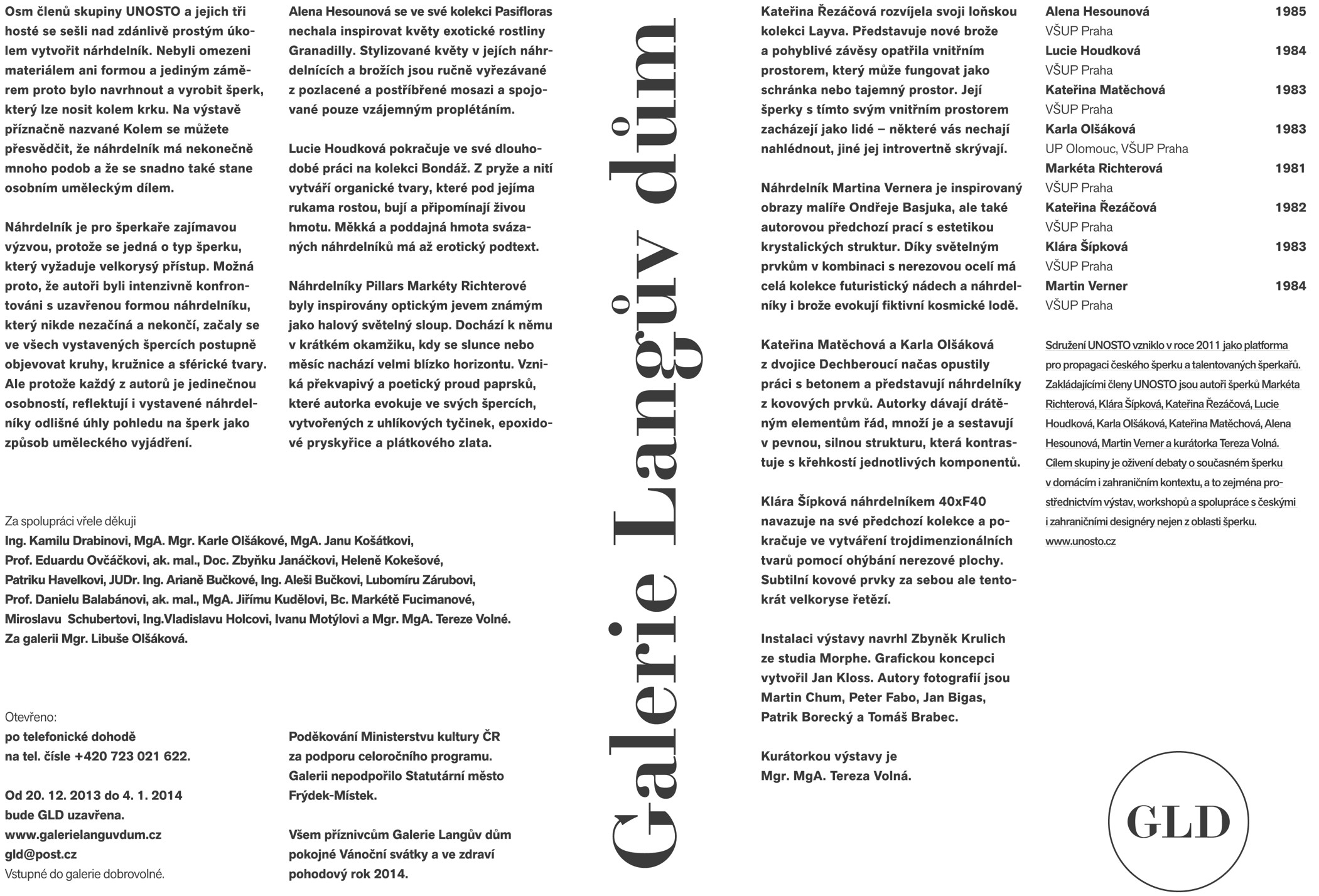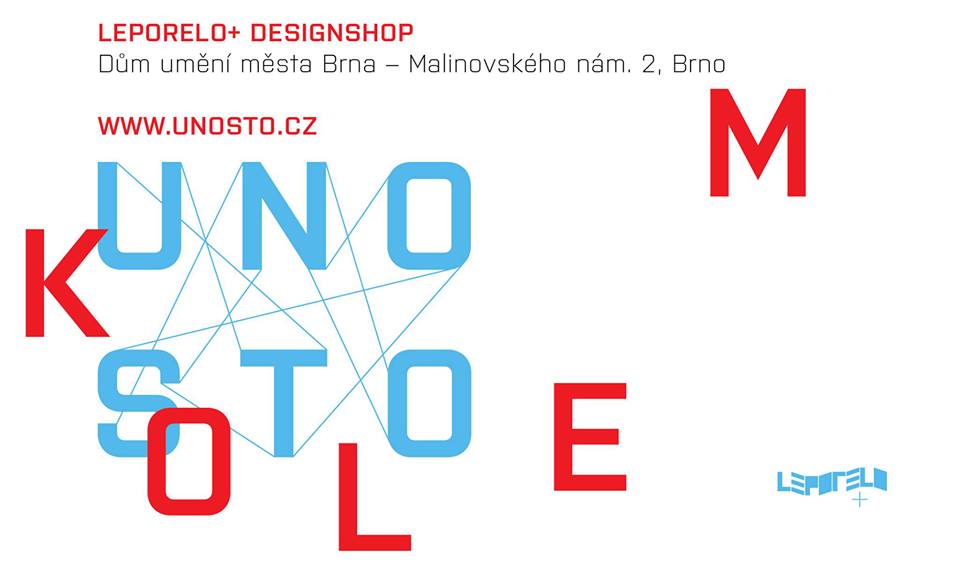News
You are cordially invited to an exhibition of our jewelery group UNOSTO to Frýdek-Místek.’
The exhibition will run from this Friday, December 13, 2013 in the Gallery Lang’s house.
You are cordially invited!
————————————————————————————————————————————————————
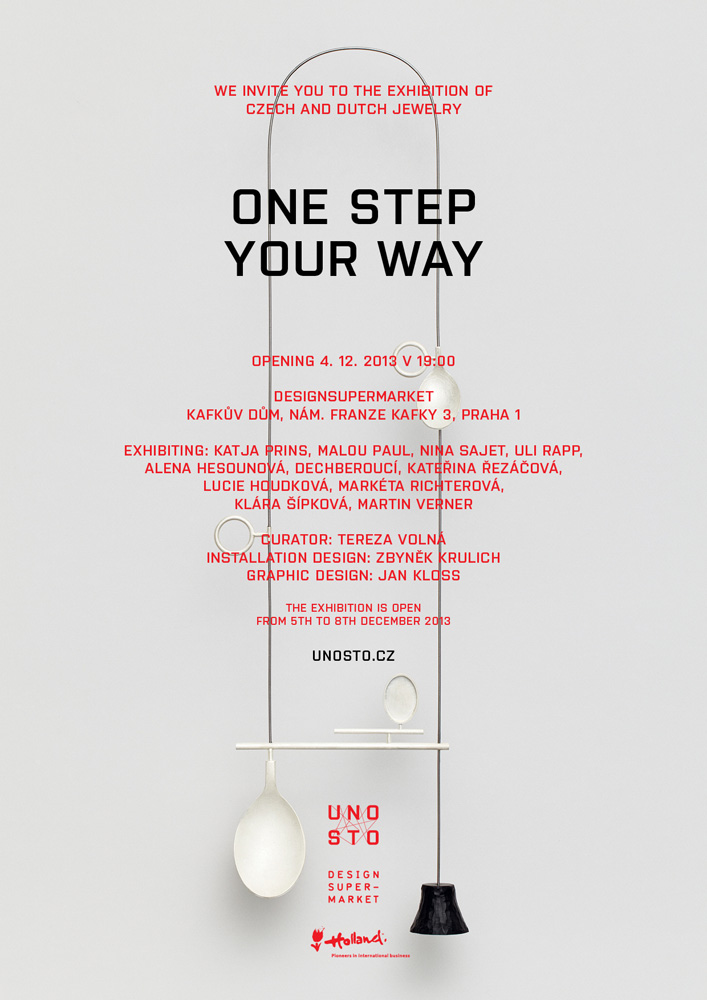
————————————————————————————————————————————————————
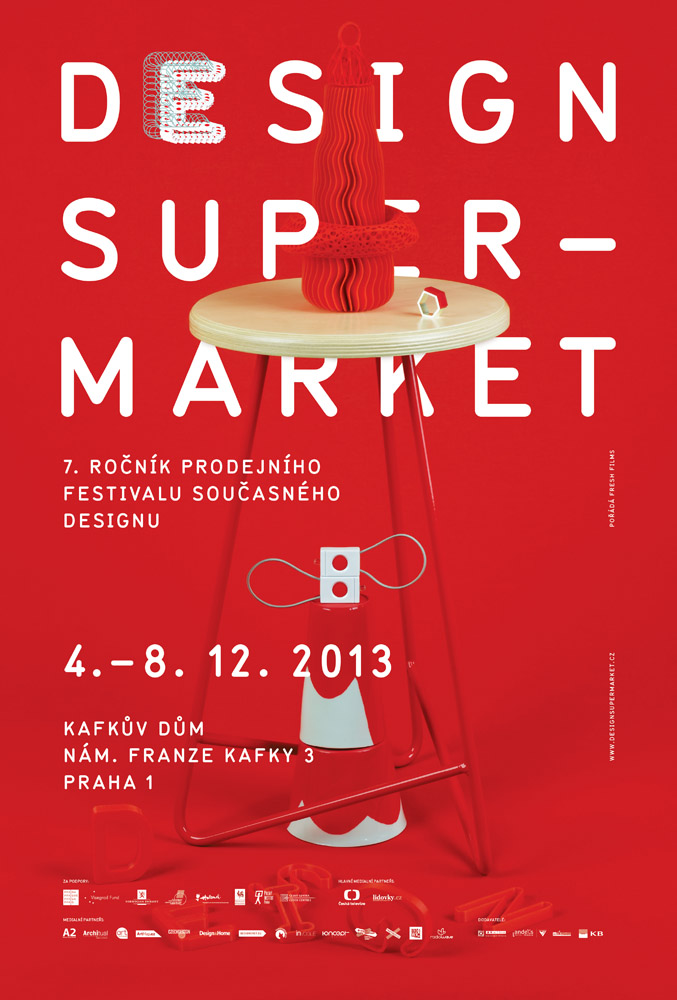
————————————————————————————————————————————————————
————————————————————————————————————————————————————
————————————————————————————————————————————————————
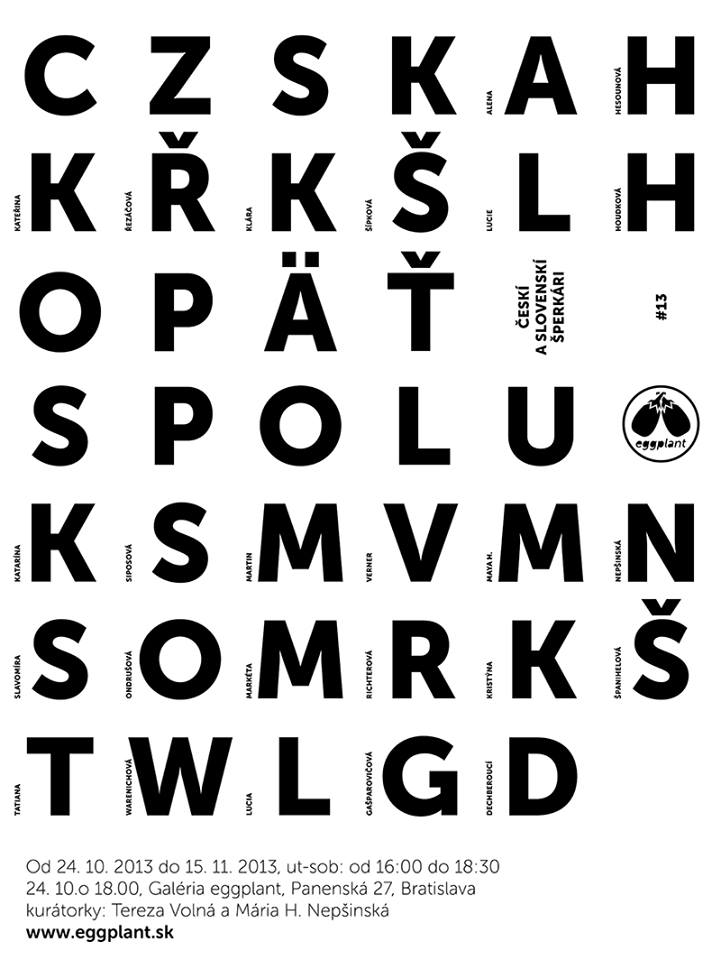
————————————————————————————————————————————————————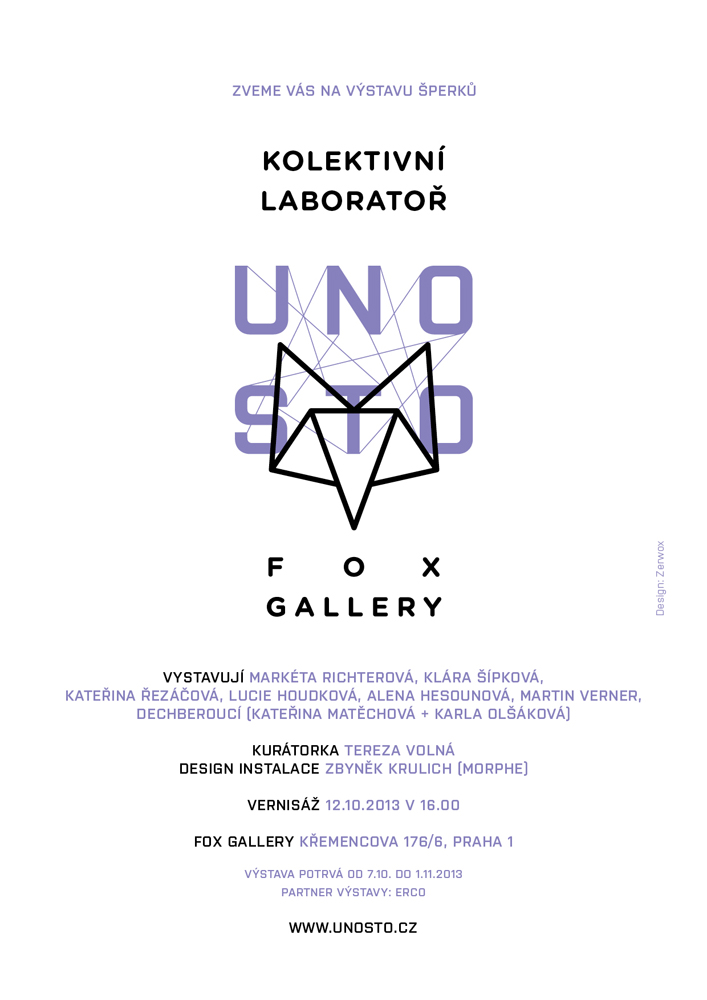
————————————————————————————————————————————————————
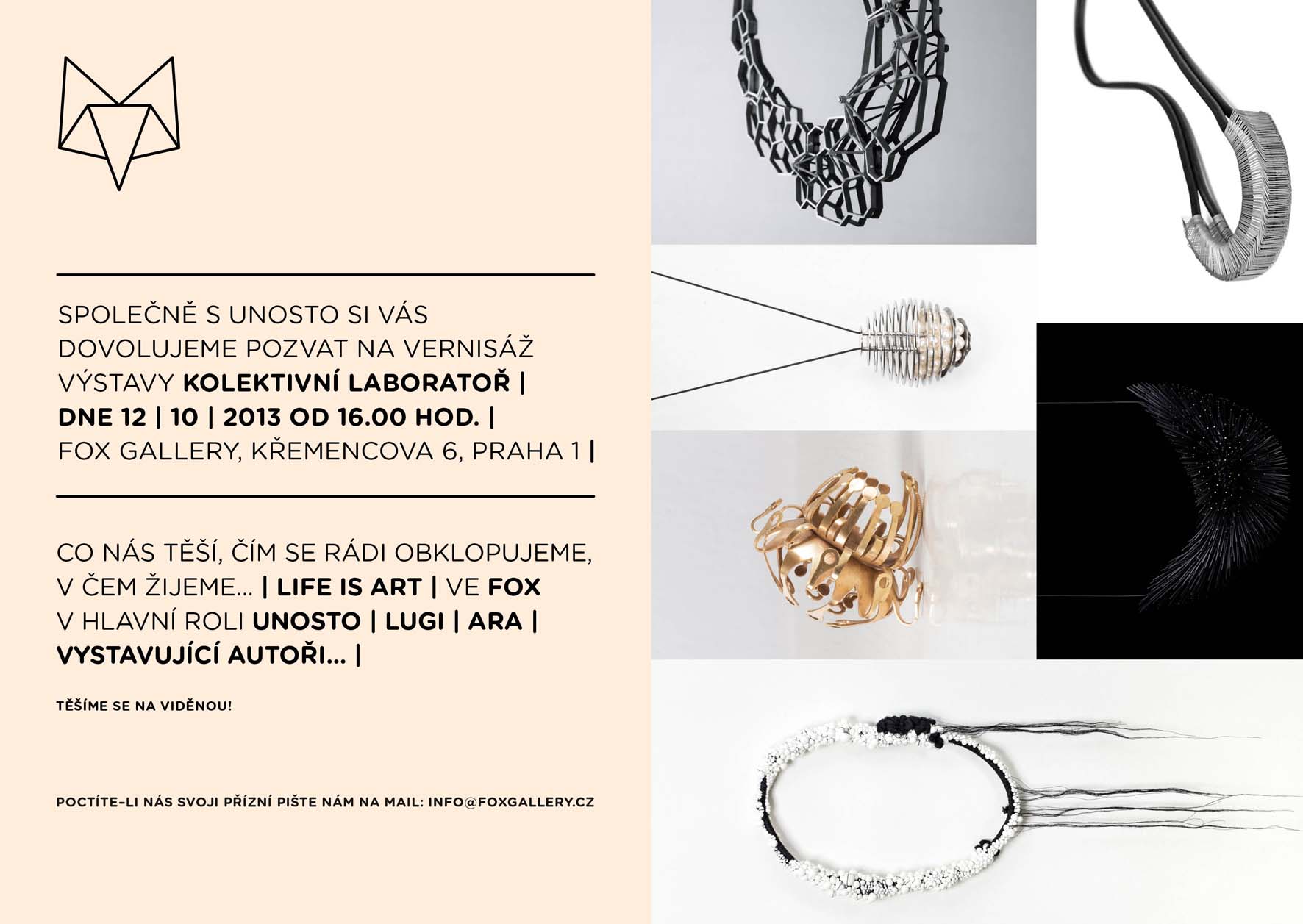
————————————————————————————————————————————————————
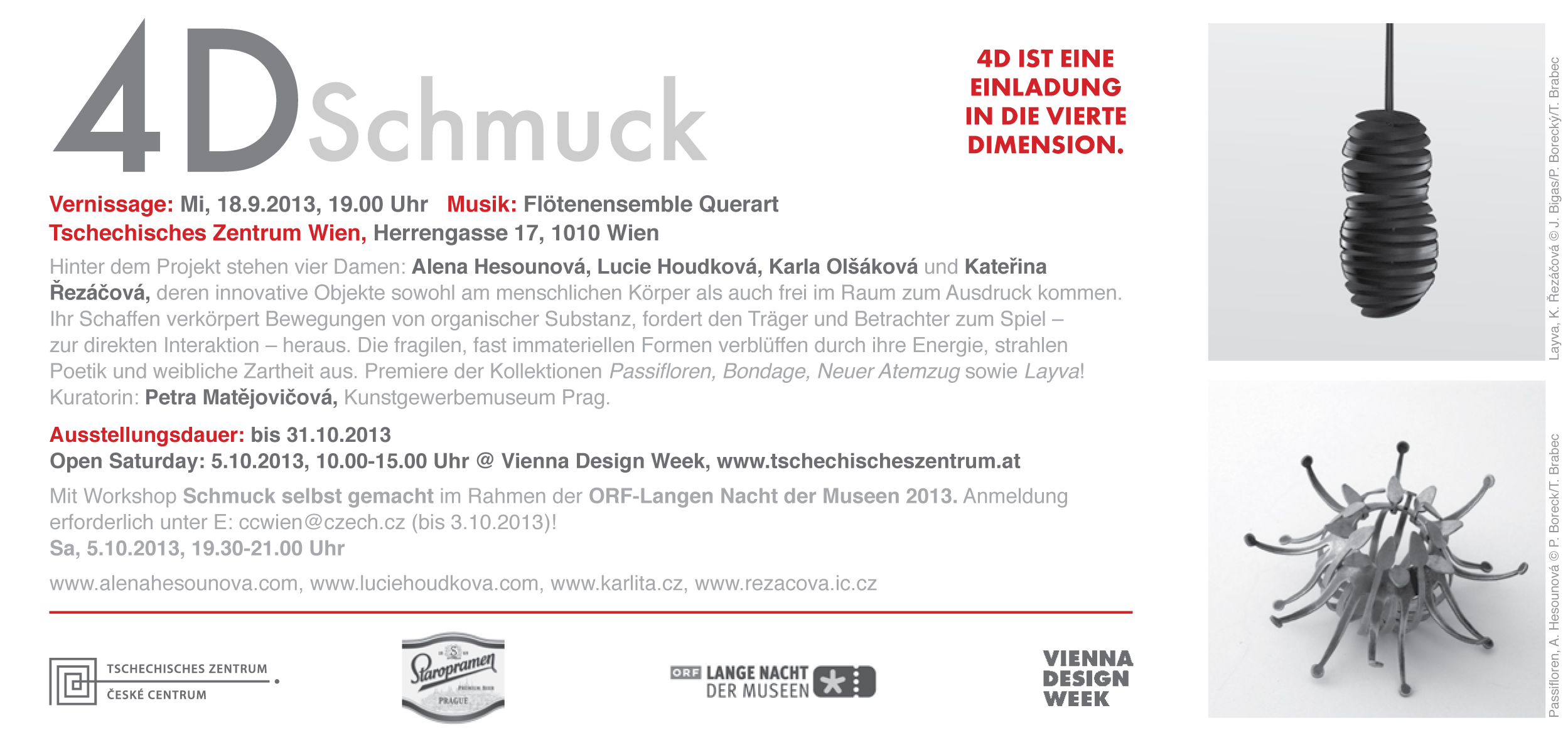
4D
The Czech Centre, Vienna, September 2013
What is 4D? Or perhaps we should ask what are 4D? The project is, first and foremost, an invitation to the fourth dimension. Behind it are four young women, graduates of the Academy of Arts, Architecture, and Design in Prague: Alena Hesounová, Lucie Houdková, Karla Olšáková, and Kateřina Řezáčová. They have been exhibiting together for several years now. They create unique objects to wear, which look equally good on the human body or displayed in space. The emphasized structure of each of these objects always stems from a specific source of inspiration. It is a record of the motion of organic substances and human thought. The objects of 4D, which can be held in the palm of your hand, ask to be touched. They invite you to play with them, to interact directly with them in the role of viewers and wearers. The impulse behind their having been made might be melancholy, even despair, but the works themselves stand out for their friendly tone and specifically female tenderness. Their apparently fragile, almost immaterial, form astonishes us with its energy.
Alena Hesounová: The Passiflora collection
In her work, Alena starts from the surface. She works directly in the material, sheet metal which has been cut through. By being deformed, doubled, and interpenetrated, new three-dimensional objects emerge with a light and thus all the more effective asymmetry. For the shapes and effect of her Impress collection (her final-year project at art college in 2011), Alena sought inspiration in the ground plans of twentieth and twenty-first-century church architecture. These spaces of introspection and encounter, designed by architects in a two-dimensional medium, have in Alena’s hands been transformed into small vessels, something like space-age arks. The objects of the current collection, called Passiflora, also have a meditative quality. This time, Alena was inspired by the movement of flowers, which open and then close again. She has transferred them to transparent compositions with a dynamic charge. The power also comes from within, from the concentrated ‘emptiness’ which is embraced by their subtle little arms.
Lucie Houdková: The Bondage collection
Lucie is an artist who is fascinated with the search for the basic structures of life and their aestheticization, which was typical of the illustrated scientific publications of the nineteenth century. In her Depth collection (made as her final-year project at art college in 2010), she drew primarily on the work of the biologist Ernst Heinrich Haeckel, who turned the attention of Western civilization to a hitherto almost unknown world of miniature creatures on the bottom of the sea. The desire of those days to discover the principle of living matter, which would be as beautiful as it is functional, comports with the fundamental idea of artistic creation. Lucie has gone further. With her kinetic objects, which undulate like the branches of coral polyps, she has paid tribute not only to the diversity of the universe, but also to jewellery’s power to enliven the human body. In the new collection, Bondage, the hitherto ethereal conception of Lucie’s objects has completely retreated from the clash of forces. Proliferating, bulging forms, cast in synthetic rubber, are tightly bound by a tissue of textile. The freely hanging ends of threads intensify the electrifying effect of the whole and its surreal tone.
Karla Olšáková: The New Breath collection
In the current form of the 4D project, Karla defends the architectural quality of art jewellery. The building blocks of her subtle works are often clearly defined stereometric forms. From them she builds either fixed compositions, whose movement is generated by the body of the person who wears them, or constructions that are kinetic from their very foundations. The jewellery, which at first sight appears to be logically assembled from repeating elements, gains a strongly sensed irrational quality thanks to the infinite variability of its appearances. This potential is the artist’s entry into an intense dialogue between herself and the wearers of the pieces. As a springboard to her collection What I Found behind the Looking Glass (which she made as her final-year project at art college in 2011), Karla was inspired to use her own experience of the remarkable stories of Lewis Carroll. Abstract objects as bare, apparently simple, and clear principles of composition were evidence that a mysterious sequence of events could be made material with the same urgency even without figurative means. Rational structure becomes the entrance ticket into a world of fantasy also in her current collection, A New Breath, in which Karla accentuates the tension between the outer and the inner profiles of the objects. She thus encounters the exciting connection between the world around us and in us, the macrocosm and the microcosm, the visible and the hidden.
Kateřina Řezáčová: The Layva collection
For some time now, Kateřina has been working with the theme of layering. In her jewellery, bordering on concrete poetry, open to all the senses, the series of layers expresses the passage of sound and the dynamics of a musical composition or the human voice. For her objects from layered curves derived from demographic data, she chose a different principle of thematizing time. She invested her own feelings and viewpoints into the work of her Graphellery collection (made as her final-year project at art college in 2010), both in her choice of input data and in the way she has reshaped them. The current collection, Layva, raises its artist’s personal formula to an even higher level by including real movement. The pendent objects of thin layers, which do not fit tightly against each other, are held together by drawstrings that can be tightened or loosened at will. Using means worthy of Constructivism, Kateřina has made jewellery of abstract shapes, yet with the character of beings. The transformations of forms bring to mind the fidgeting and restlessness intrinsic to everything that is alive.
Petra Matějovičová
The Museum of Decorative Arts in Prague
August 2013
English translation: Derek and Marzia Paton
————————————————————————————————————————————————————
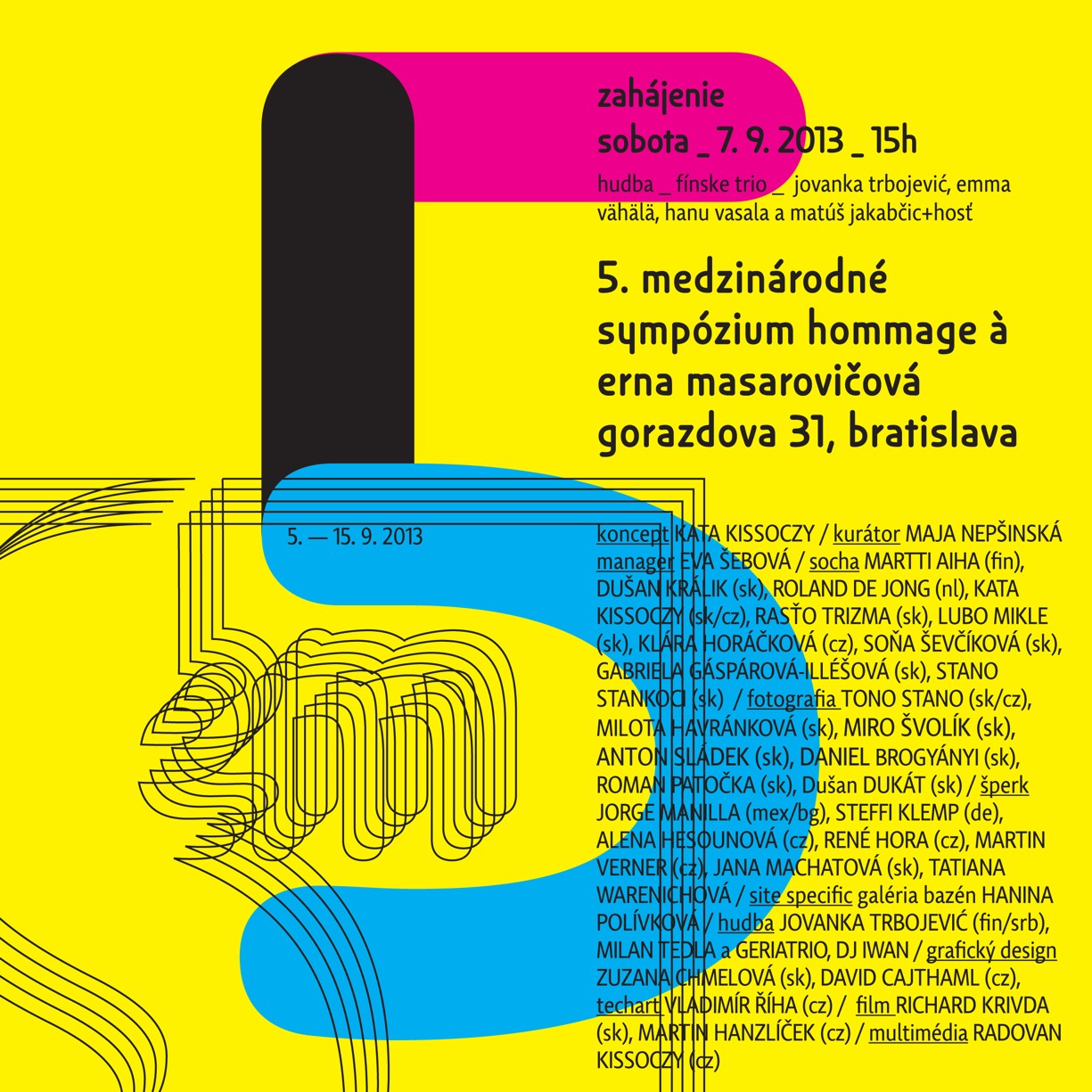
————————————————————————————————————————————————————
Eight members of the group UNOSTO and their three guests met over the seemingly simple task of creating a necklace. They were limited material or form and therefore only intention was to design and produce a piece of jewelry that can be worn around the neck. The exhibition aptly called around you can see that the necklace has infinitely many forms and can easily become too personal work of art.
Exhibited: Markéta Richterová, Lucie Houdková, Klára Šípková, Kateřina Řezáčová, Alena Hesounová, Martin Verner, Tereza Houdková, Anna Steinerová, Marcela Steffanová a Dechberoucí (Kateřina Matěchová a Karla Olšáková)
The exhibition will run from 19 6th 2013 – 21st 7th 2013 Tue – Sun / 10h – 18h
Admission to the exhibition is free
You are cordially invited!
————————————————————————————————————————————————————
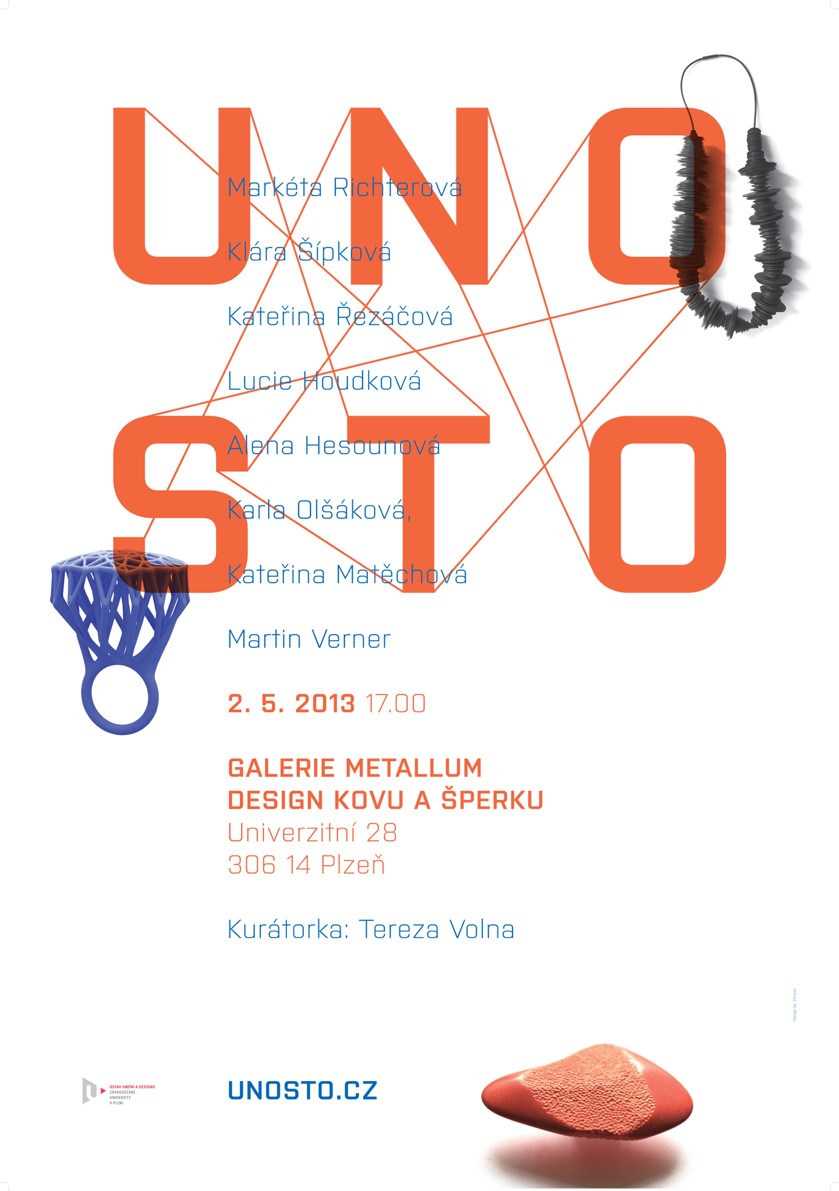
————————————————————————————————————————————————————
If in the near future are going on a trip to Jablonec nad Nisou, receive a cordial invitation to the Museum of Glass and Jewellery, where it is possible to see some of my brooch of a series of Impress.
For more information, visit www.msb-jablonec.cz
————————————————————————————————————————————————————

————————————————————————————————————————————————————
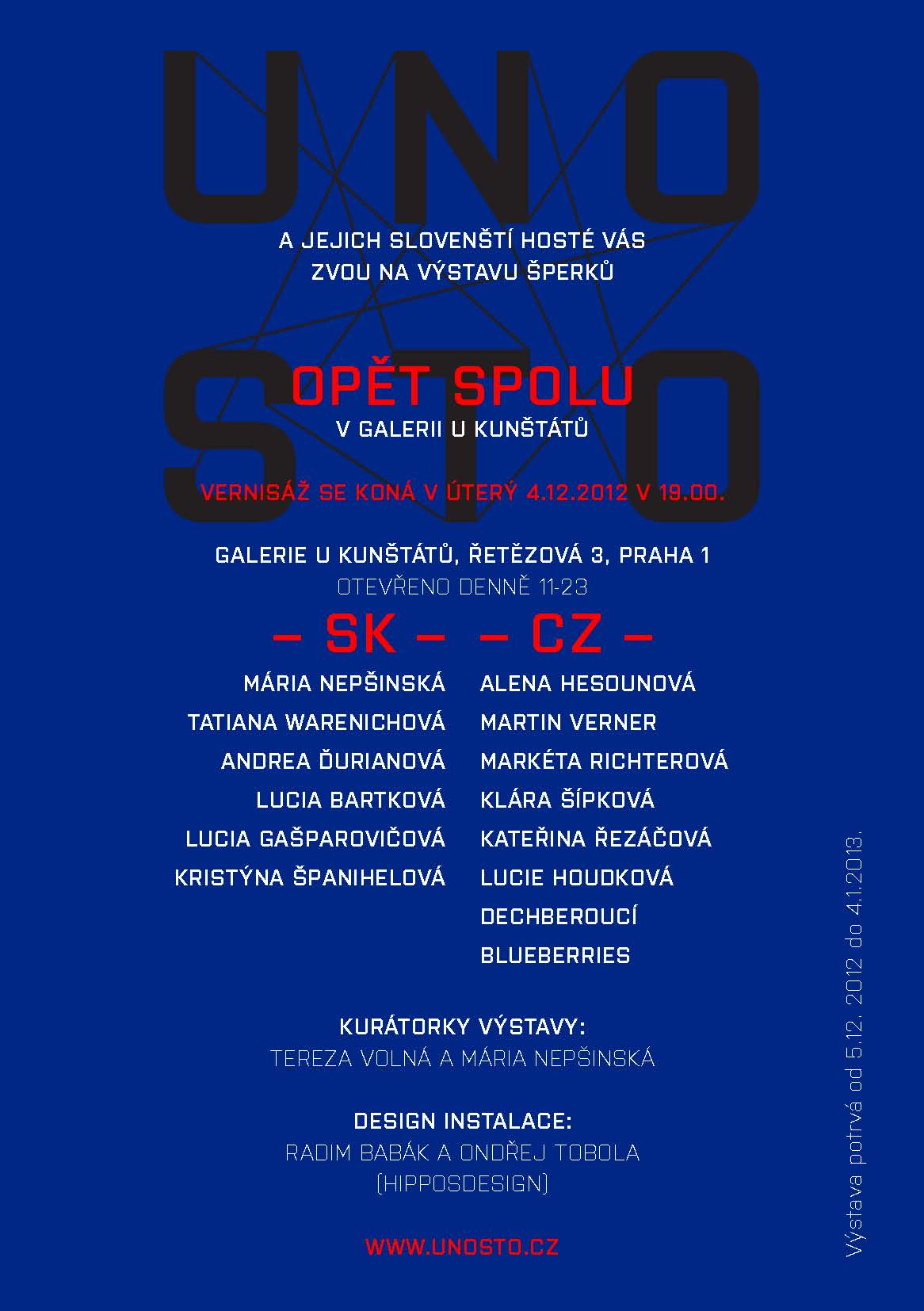
————————————————————————————————————————————————————
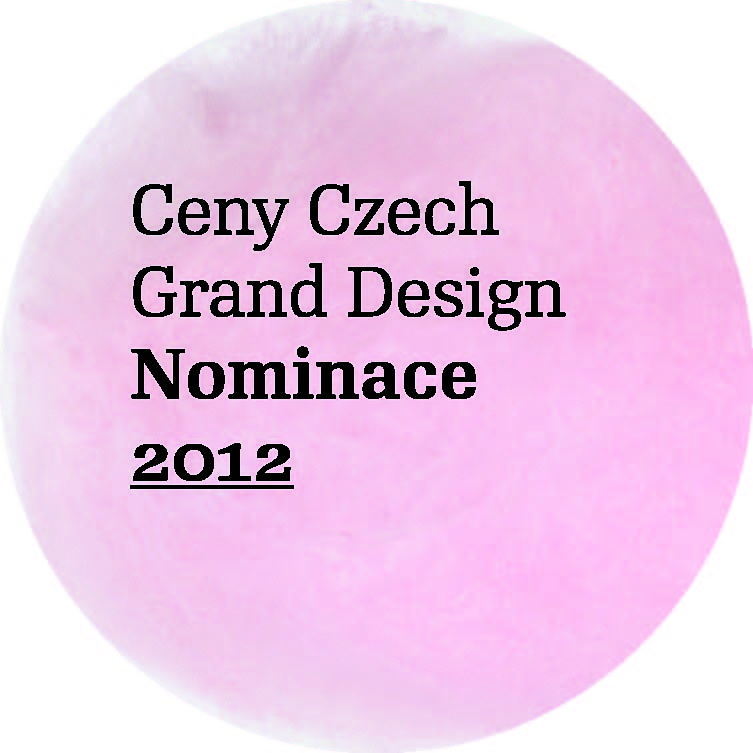
————————————————————————————————————————————————————

We cordially invite you to the exhibition UNOSTO group called “Around” in Gallery Gold Lily, Malé náměstí 12, Praha 1
Photo: Patrik Borecký, Jan Bigas, Tomáš Brabec
Graphics: Jan Kloss
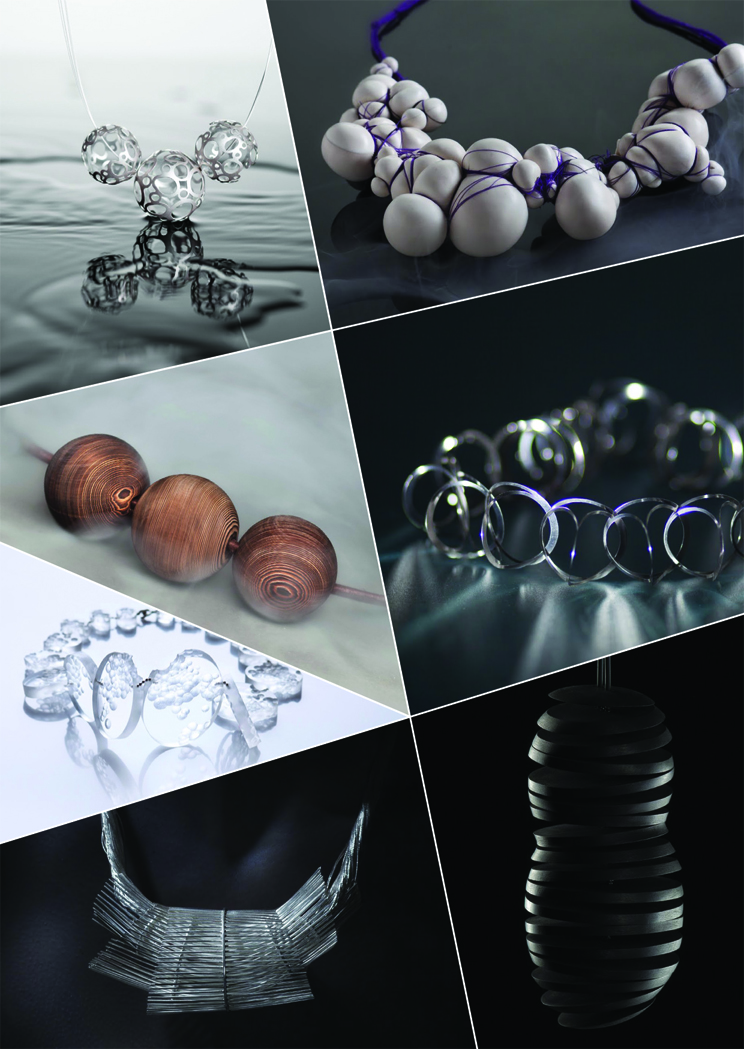
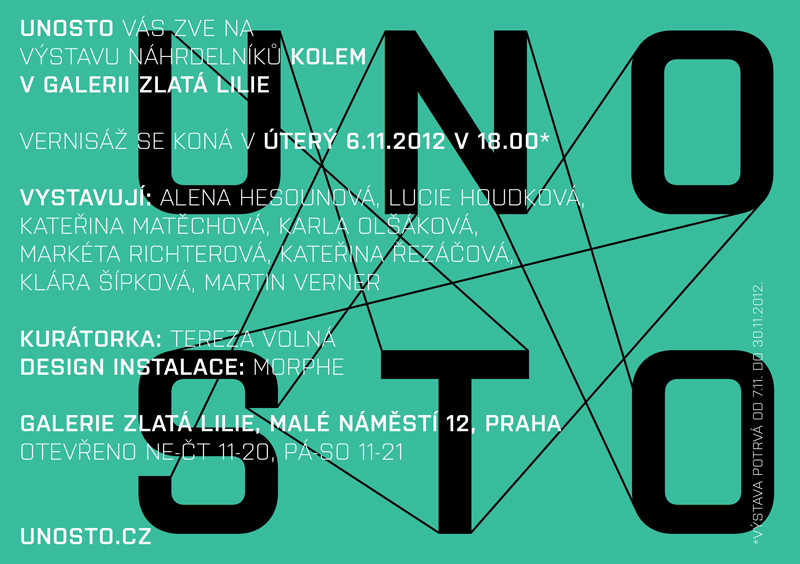
————————————————————————————————————————————————————
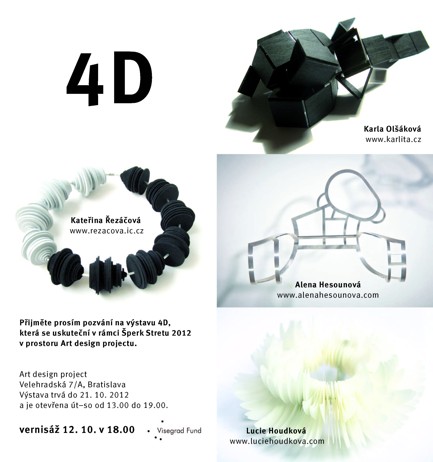
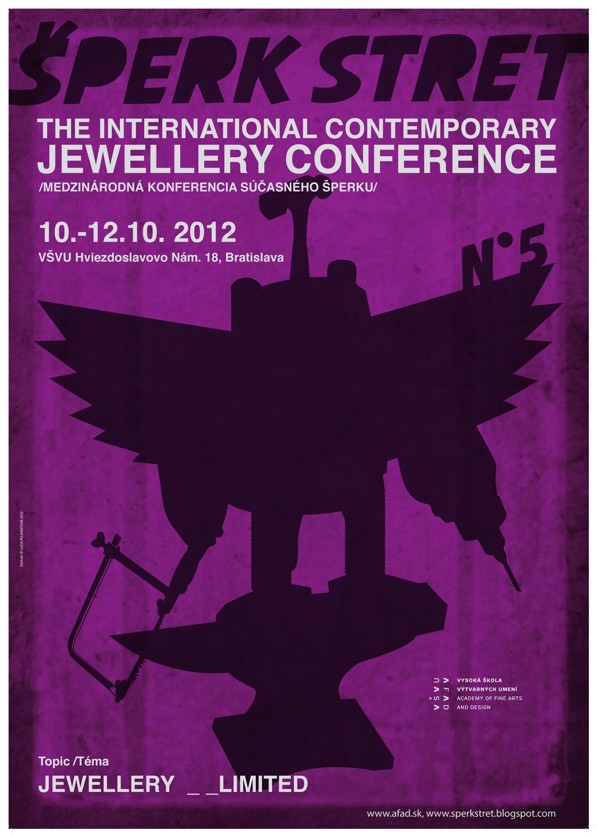
————————————————————————————————————————————————————
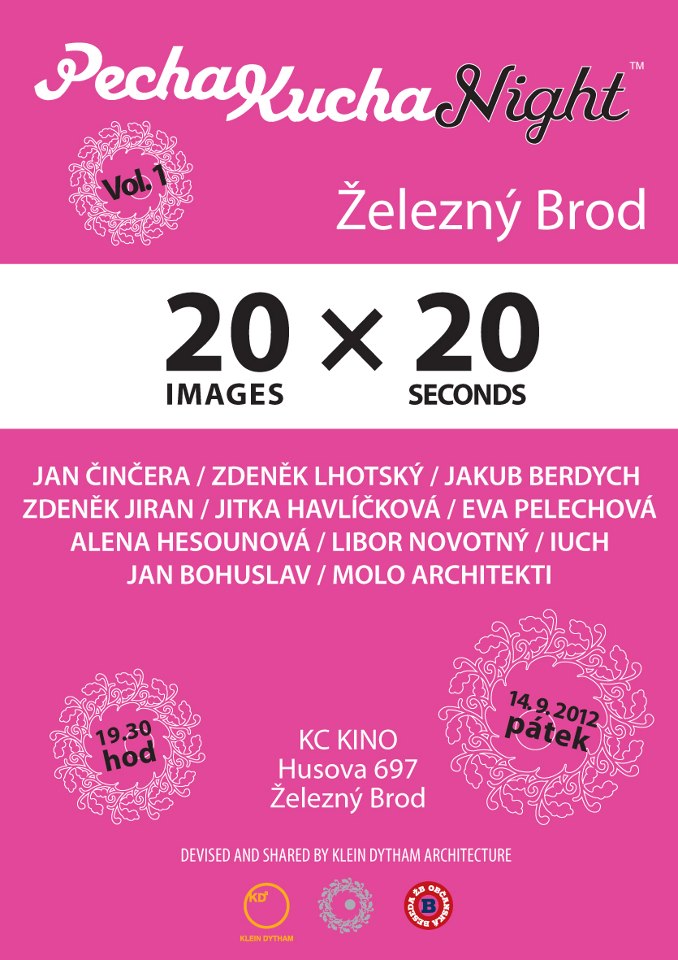
————————————————————————————————————————————————————
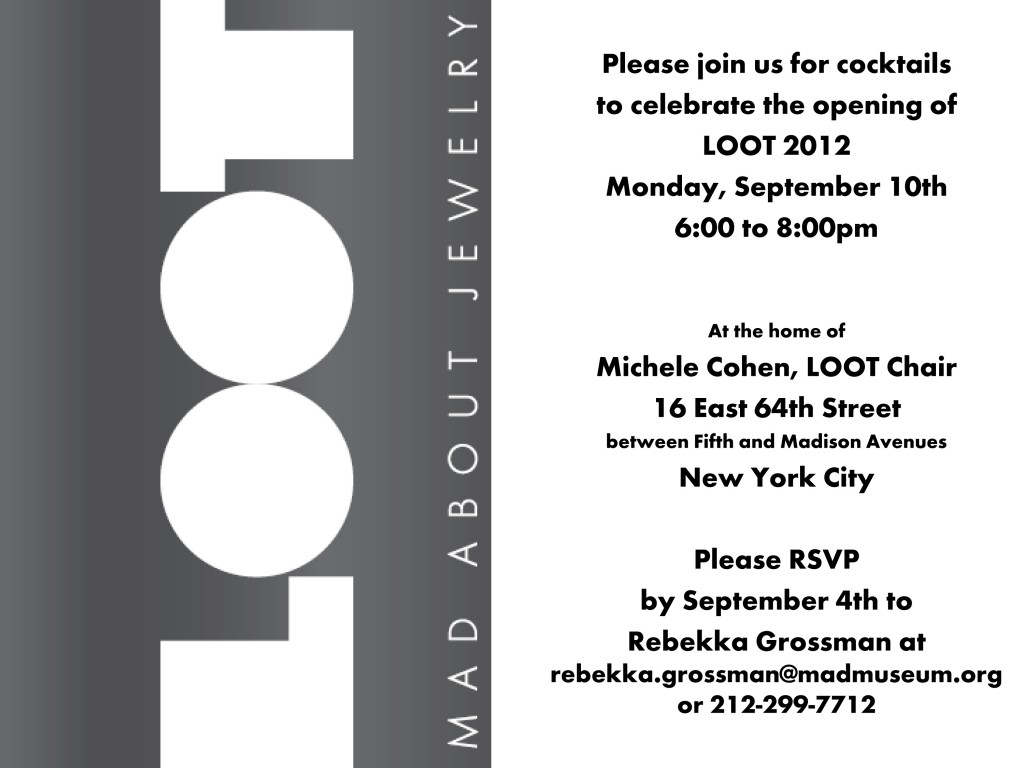
————————————————————————————————————————————————————
Holcim Art – The material matters – This year I had the opportunity to participate in the production of jewelry collection for the 100th anniversary of the company Holcim. The author of this original collection is Kateřina Venclíková.
————————————————————————————————————————————————————
Jewelery Top 5: Unosto best cakes and inspirational web
Last year, established nine young Czech designer jewelry association Unosto. What budding jeweler fun web and what inspires them?
hopeful
————————————————————————————————————————————————————
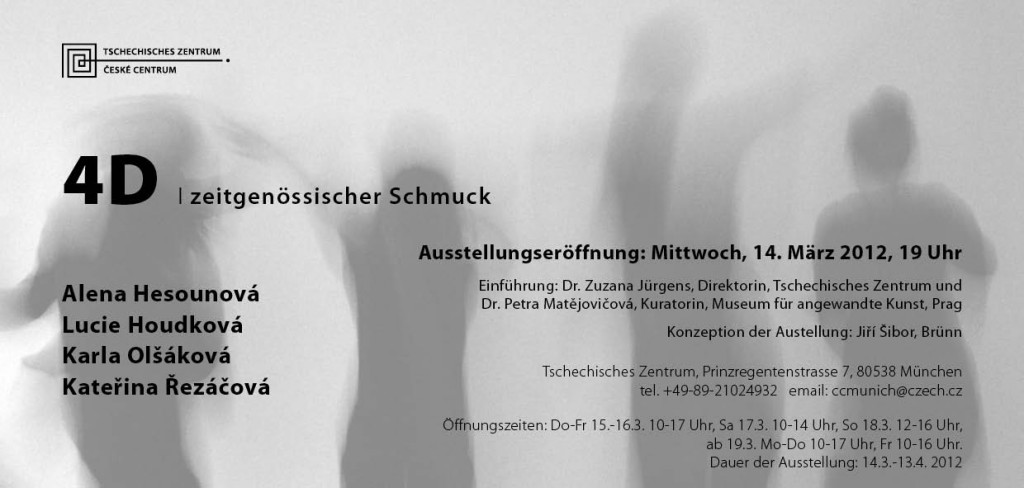
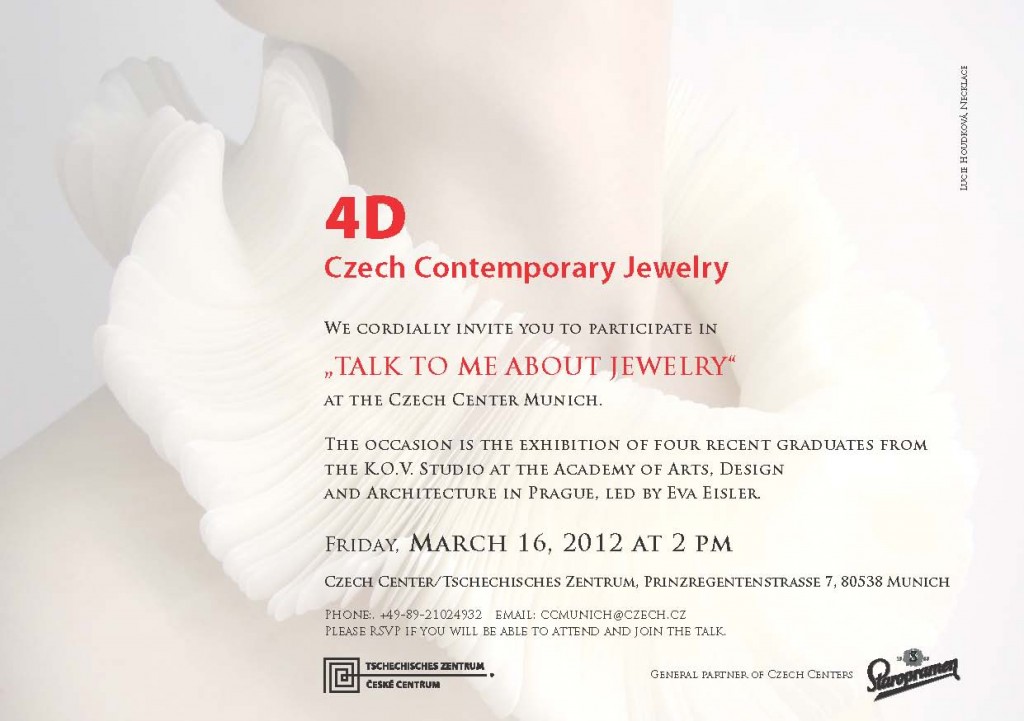
4D
What is 4D? Or perhaps we should ask: What are 4D? Some sort of voyage into the fourth dimension? To a certain extent, this is also true, but most importantly 4D are four young women: Alena Hesounová, Karla Olšáková, Kateřina Řezáčová and Lucie Houdková. As the four have only recently completed their university education, the exhibition explores art projects in which they further elaborate on their respective diploma theses. The four ladies have much in common, and it seems that a strong generation of artists is emerging in Bohemia, intrinsically linked with the Czech art jewellery “school” of the late 1960s and early ‘70s. During their studies at the Academy of Art, Architecture and Design in Prague, the four young ladies experienced a major shift in the training methods practiced in their studio. At the beginning they had met Vratislav Karel Novák, but graduated under Eva Eisler. The fact that they stood the test even under the new conditions suggests these are strong personalities who appear to have emerged strengthened by the unexpected changes.
In their work, each of the four artists draws inspiration from a particular source, which is imprinted in their jewellery’s accentuated structure infused with meaning. Their floaty, almost immaterial artefacts are expressions of the fundamental principles of artistic creation, human thought and the world we live. Their jewels physically exist, having the status of three-dimensional objects. However, their space is defined through curved lines and ever-so-thin, transparent layers. It is expressly the seemingly empty space that plays a decisive role; it is the space that identifies the heart centre of the jewel. The space requires material substance only insofar as to make us aware of it.
These are not only the material-spare solutions that link the artwork of the 4D with the prominent personalities of the 20th-century Czech art jewellery, headed paradoxically by the Slovak jewellery artist Anton Cepka. There is also a specific emotionality coupled by a poetic dreaminess, rendered by means worthy of the Constructivism. The 4D’s artefacts endow this approach with a feminine grace which, combined with preciseness, charges the jewellery up to the sparkling.
The works of the 4D are an appetizer that invites the potential wearers to take part in determining the jewels. The objects might be variable. They can be transformed from closed shapes to dynamic forms in interaction with the space around them. A tiny box can be re-arranged like a puzzle into a pendant or necklace. Another way of expressing the personality comes with the jewellery composed on the basis of specific input data. Attached to the distinct fragility of the 4D’s jewels are the playfulness and humour, the way to experience joy or sadness, as well as fundamental issues in life that concern every individual.
The openness of the 4D’s works to all senses and media likens them to the Concrete poetry. There is the fragrance of materials, emanating during the creative process. The scent may be perceived as an intangible echo or recollection by some viewers. In other instances, the jewels composition is derived from the dynamism characteristic of music. This particular connection reveals another powerful element in the works of the 4D group – the thematization of time; in other words, the jewellery’s fourth dimension. In this sense, it is not only a matter of work of art’s perception as such, which naturally takes place in time. Time can also be imprinted in the material itself. Frequently it is wood with its annual rings bearing witness to growth and extinction, two diverse forms of eternity. Structurally, the jewellery is inspired by fundamental life forms, as well as shapes of sacral spaces, both of which persist in mutability. In our minds, we strive to grasp their inception. The manner in which human civilization records time and events in its course can be another source of the jewels’ composition. The jewellery created by the 4D group is allusive, nothing is expressed in full.
Alena Hesounová: The “Impres” Collection
In Alena’s work, everything unfolds from the plane. Through its deformation, doubling and interpenetration, the spatial objects are created, charged with a dynamic force and a slight, yet that much more compelling, imbalance in symmetry. She works directly in final material, that is in the saw-pierced metal sheet. Alena has a penchant for forms evocative of mighty meanings, perceived by society as being inviolable. Treating them as jewellery, these forms appear in new contexts. For the shapes and appeal of her current collection, Alena has sought inspiration in the ground plans of Christian sacral architecture of the 20th and 21st centuries. Transforming this type of inspiration into sophisticated work of art is a real challenge, as the danger of overloading the object with symbolic meaning is indeed great.
Fortunately, the artist’s creations attest to the existence of jewellery as a sovereign category of artistic expression, with the potential of enriching the symbols, interpreted time and again, thanks to their unusual scale, and more precisely different relationship with the human body. What were initially spaces of spiritual concentration and get-togetherness are now transfigured into abstract compositions. And, on the second thought, aren’t they in fact interstellar ships? Or arks of the cosmic era?
Lucie Houdková: The “Depth” Collection
Lucie is one of those artists who are fascinated by the quest for the basic structures of life and their aesthetic transformation, as characterized by the 19th-century illustrated science books. Her chief source of inspiration is the work of the biologist Ernst Heinrich Haeckel, who turned the interest of the Western civilization to the then yet unknown world, that is to miniature creatures inhabiting the ocean floor. The desire prevalent in his day to discover the principle of living substance, which would be both functional and beautiful, meets the notion of artistic creativity as such. Lucie ventures further. In her kinetic jewellery that undulates like the tentacles of coral polyps, the artist not only pays homage to the infinitely diversified Universe. She also perceives the jewellery’s power to enliven the human body just like corals transmute the sea. Her objects made from paper straps have an ethereal quality that resonates with the artist’s personality.
Karla Olšáková: “What I Found Behind the Mirror” Collection
Simple geometric forms are the cornerstones of Karla’s work. Moveable construction, which, at first glance, is logically assembled from precisely executed, repeated elements, is in fact endowed with a compellingly irrational quality, owing to the infinite variability of the whole scheme. The broad potential of Karla’s kinetic jewellery is her contribution to an intense dialogue between the artist and the viewer-cum-wearer. Her personal impressions from reading Lewis Carroll’s miraculous stories were the springboard for her collection on view. Her abstract jewellery as an exposed, lucid and seemingly simple compositional principle is proof that the mysterious sequence of events in “Alicein Wonderland” can assume material form with a similar effect even without using figurative means. Rational structure becomes a ticket to the world of imagination. After all, wasn’t the author of “Alice” a logician and mathematician by profession?!
Kateřina Řezáčová: The “Graphellery” Collection
Kateřina’s jewellery differs in visual expression from that of the other 4D artists. Her pieces are somewhat more “dense” in appearance, complemented by a darker or sharper tonality. Through her use of technical data, curves of graphs and recorded sound parameters, Kateřina has arrived at a very personal artistic statement. In selecting the data, which she then transforms, she imbues her artworks with her innermost feelings and perspectives. She offers the same possibility to the potential wearers of her jewellery as well. The encoded demographic information, which is applicable to every one of us, does not leave any initiated person cold. It is up to the wearer or donor of the jewel to what extent he or she will unveil the secret hidden in
the piece, which is simultaneously presented for show. Reshaped beyond recognition, a graph bearing the wearer’s year of birth provides a discreet hint of her age. The artist’s closeness to music is reflected in jewellery objects, in which she focuses on sound waves. The chosen colour scheme does not correspond to tonal height, as may appear, but is loosely derived from sound volume. In perceiving her jewellery, we begin to relate it to music subconsciously. A song resonating with a person’s deepest sorrow expressed in overtly bright colours is just as striking as the human willpower to survive life’s misfortunes.
The 4D project brings new blood to Czech individual jewellery. Art jewellery has emerged completely liberated from its experience in the field of Conceptual Art of the second half of the 20th century. All boundaries, as well as the prerogative that jewellery must exist in the real world have disappeared. Anything is allowed. The young ladies of 4D have proved that even a jewel spontaneously regarded as fine art can take on a form of wearable object. Even a small-sized, exquisitely crafted and relatively durable piece can convey a message about the depths of the human soul.
The four artists’ creative output resonates in exciting harmony. The four women are aware of their affinity with one another. Hopefully, we are witnessing the emergence of a new generation. All four artists are members of the UNOSTO association – a broad platform of young jewellery designers that was founded in autumn 2011 in Prague.
Petra Matějovičová, March 6, 2012
Museum of Decorative Arts in Prague
E-mail: matejovicova@upm.cz
Phone: +420 251 093 233
Cell: +420 602 337 625
————————————————————————————————————————————————————
